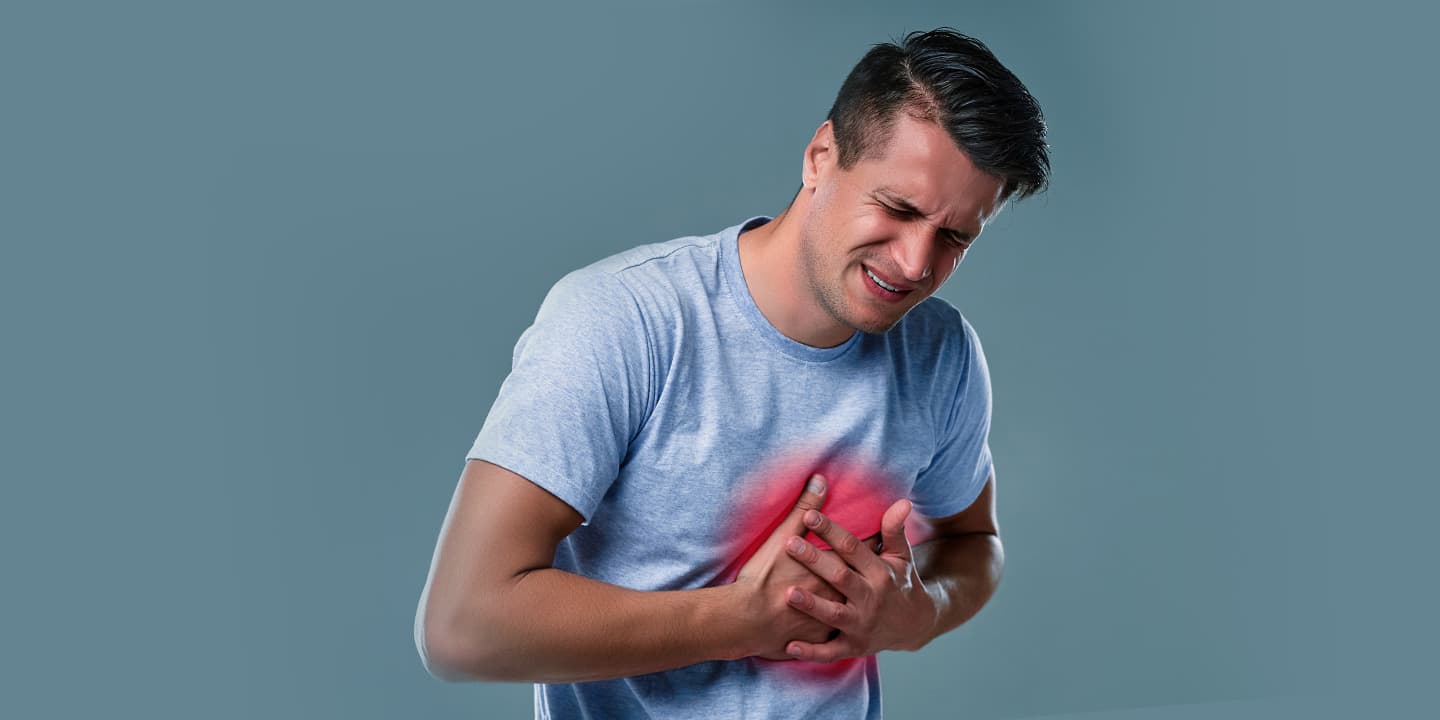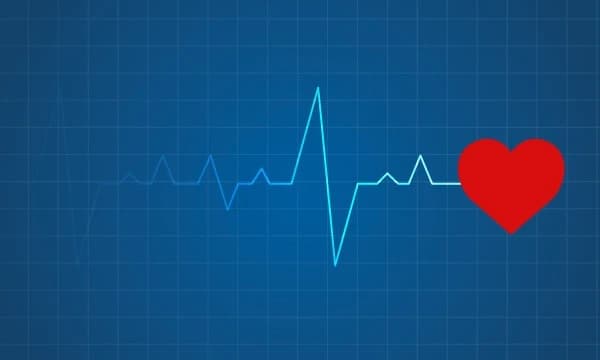Heart arrhythmias: types, symptoms, causes, diagnosis & treatments

Medically Reviewed By
Dr. Ragiinii Sharma
Written By Prekshi Garg
on Jun 22, 2022
Last Edit Made By Prekshi Garg
on Mar 18, 2024

If your heart is beating quite fast, fluttering, beating slow, or skipping a beat, you may need emergency medical help to know what exactly is happening. Sometimes, these unusual heartbeats known as heart arrhythmias can also be harmless.
Different types of irregular heartbeat or arrhythmias can be triggered due to associated medical conditions like - high blood pressure, diabetes, thyroid disorders, electrolyte imbalance, and other lifestyle factors.
Diagnosis includes a detailed evaluation of the heart, following which the doctor will devise the best possible treatment plan. This article opens on everything you need to know and understand about heart arrhythmias, its types, symptoms, diagnosis, and treatment options.
What is Heart arrhythmia?
Heart Arrhythmias are irregular beats of the heart that affect its rate and rhythm. It occurs mostly when the electrical impulses of the heart that regulate the heartbeats fail to function properly.
The unusual rhythm of the heart entails a range of heart disorders such as,
- Fast Heartbeats or tachycardia,
- Slow heartbeats or bradycardia,
- The early beating of the heart or premature contraction,
- Erratic heart beating or fibrillation
It is estimated that around 1 to 1.5% of the population has this broadly categorized arrhythmia. Arrhythmias are generally non-problematic and harmless. However, this type of heart disorder can impede blood flow, leading to vital organ damage, including the lungs, brain, and heart.
What are the Types of Heart Arrhythmias?
The three criteria based on which the arrhythmias are categorized include:
- Heart rate - too fast or too slow
- Place or origin - atrium/ supraventricular or ventricles
- Regularity
When the heart beats properly, the electrical impulses are conducted in a precise pathway that coordinates the heart muscle function, allowing proper pumping of the blood.
Any interruption in the electrical impulses can lead to a disruption of pathways, causing arrhythmia. They can occur in three different modes.
- Sinus mode
- Ventricular mode (in the heart’s lower chambers)
- Atrial mode (in the heart’s upper chambers)
Here is a detailed description of different types of arrhythmias.
Bradycardia
This type of arrhythmia occurs when the heart beats slower than 60 beats per minute. Conditions such as heart blockage, congenital heart diseases, sleep apnea, or sick sinus syndrome - disorders associated with the sinus node can cause bradycardia.
Tachycardias
This arrhythmia type occurs when your heart rate fastens to more than 100 beats per minute.
Tachycardias can affect how the heart pumps blood. The rapid heartbeat may not allow enough filling of the blood necessary to pump to the rest of the body. This condition can last for a few minutes but can be accompanied by severe chest pain. Tachycardias lasting for more than 30 minutes might require immediate medical attention.
Ventricular arrhythmias and subtypes
Arrhythmias that begin in the ventricles or lower heart chambers are referred to as ventricular arrhythmias.
Forms of ventricular arrhythmias are:
- Ventricular Tachycardia: People with heart ailments such as coronary heart disease or a heart attack are at risk of having this arrhythmia type. The heartbeats go above 100 beats a minute at rest, and the rhythms originate from the lower heart chambers. It can be life-threatening if this condition lasts for a longer time.
- Ventricular Fibrillation: A sudden, irregular, erratic heartbeat in the vertices generally triggered by heart attacks are ventricular fibrillation. In this form of arrhythmia, the heart cannot pump the blood into the body, damaging the organs, while the heart rate drops rapidly, leading to sudden cardiac arrest and death (in case of no immediate treatment).
- Premature ventricular beats: Also known as VPCs, an extra or early heartbeat originates from the ventricles in this arrhythmia type.
- Torsades de Pointes: An uncommon condition triggered by inheritance of a specific long QT syndrome or certain medications. It can be life-threatening.
Supraventricular or atrial Arrhythmias and subtypes:
Atrial arrhythmias begin in the atrium or the upper heart chambers and are also known as supraventricular arrhythmias (SVT).
In SVT, the sudden chaotic heartbeat of 60 to 100 beats a minute begin and end suddenly or abruptly. In this form of arrhythmia, the heart beating lasts for a few minutes to several hours at rest.
Forms of supraventricular arrhythmia are:
- Atrial Fibrillation: In atrial fibrillation or AF, the atrium beats as quickly as 400 beats a minute. The atrium cannot contract completely and synonymously, and the ventricular pace also increases. Risk Factors for AF include people above the age of 65 and people with medical conditions. However, an untreated AF can lead to critical and life-threatening conditions such as stroke.
- Atrial Flutter: Atrial flutter or AFI involves a rhythmic heartbeat with no specific symptoms. However, an untreated AFI can cause critical conditions. People with heart diseases are more likely to have AFI.
- Atrial or Supraventricular Tachycardia (SVT): During SVT, the heartbeats go above 150 to 200 beats a minute. They are of different types- Atrioventricular Nodal Reentrant Tachycardia (AVNRT), Atrioventricular Reciprocating Tachycardia, Atrial Tachycardia, and Sinus Tachycardia.
- Paroxysmal Supraventricular Tachycardia: In PSVT, the heart beats rhythmically but rapidly begins from the atrium.
- Wolff-Parkinson-White Syndrome (WPW): A congenital heart defect causing fast beating of the heart’s upper and lower chambers. The most common type of arrhythmia in WPW is supraventricular Tachycardia.
Premature heartbeat
In a premature heartbeat, the person can experience a skipping of a heartbeat. A heartbeat consequently occurs quickly, interrupting the earlier beat. However, a premature heartbeat can lead to a more serious condition or arrhythmia in people having a heart condition.
Sinus Arrhythmia
The sinus node - a natural pacemaker, employs electrical impulses and helps regulate the heartbeats. In sinus arrhythmia, a rhythmic variation in the heart rate is seen, when the heart goes into the resting phase. It can happen in people with breathing problems or certain underlying conditions of the sinus node or heart. During a heart attack, the electric impulses are blocked, causing sinus arrhythmia and other severe cardiovascular conditions.
What are the Symptoms of Arrhythmias?
Heart arrhythmias often do not cause any signs or symptoms. However, possible symptoms of arrhythmias include:
- Rapid heartbeats or Tachycardia,
- Slow heartbeats or Bradycardia,
- Chronic pain in the chest,
- Shortness of breath,
- Fluttering in the chest,
- Anxiety,
- Excessive sweating,
- Dizziness or faintness,
- Fatigue or extreme weakness,
- Palpitations,
- Low blood pressure.
What are the Causes of Arrhythmias?
In a healthy heart, the heart's electrical signaling process usually goes smoothly, causing effective pumping of the blood and a normal resting heart rate of 60 to 100 beats a minute.
The causes of irregular heartbeat or arrhythmia include:
- A previous heart attack or scarring post-heart attack,
- Blockage of arteries,
- Structural changes in the heart,
- High blood pressure,
- Diabetes,
- Covid-19 Infections,
- Obstructive sleep apnea,
- Hyper or hypothyroidism,
- Certain unprescribed medications and anti-allergic drugs,
- Alcohol and drug abuse,
- Excessive intake of caffeine,
- Predisposed genes affecting the heart,
- Smoking and secondhand exposure to smoke,
- Medical history of heart ailments, a previous heart surgery,
- Congenital heart defects,
- Electrolyte imbalance,
- Stress and anxiety.
Diagnosis and Treatment for Arrhythmia
Heart arrhythmia diagnosis includes a detailed physical examination and a review of medical history and symptoms. Diagnostic tests may be conducted to detect the conditions causing an arrhythmia.
- Electrocardiogram or ECG: ECG helps detect the heart's electrical activity while measuring the timing and duration of the electrical phases of the heart. Sometimes, a holter machine (a portable ECG) can be used to record the heart’s eclectic conduction throughout the day or more. Event recorders or implantable event recorders are placed under the skin to record ECG for more than 30 days, which can help identify irregular heart rhythms.
- Echocardiogram: It is a non-invasive diagnostic test where sound waves are used to create images of the heart. The echocardiogram records the heart’s size, structure, and activity.
- Stress test: A stress test involves measuring the heart’s activity while exercising, riding a bicycle, or walking on a treadmill.
- Tilt table test: This test helps monitor blood pressure and heart rate.
- Electrophysiological testing and mapping: This test helps the doctor identify the location of the arrhythmia and determine the possible risks and causes of heart arrhythmia.
Treatment for Arrhythmia
Treatment for heart arrhythmias depends on the type of arrhythmias that may include medications, therapies, or heart surgeries.
- Medications: Medications administered depend on the type of arrhythmias and the associated complications. For instance, if a person has atrial fibrillation, blood thinners may help prevent blood clots.
- Therapies: Therapies to treat heart arrhythmias include vagal manoeuvres for supraventricular tachycardia and cardioversion in cases of atrial fibrillation.
- Surgery or other procedures: These include catheter ablation, pacemaker implantation, cardioverter-defibrillator (ICD) implantation, coronary heart surgery, or maze procedure.
Frequently Asked Questions
-
Is a heart arrhythmia critical?
The type of arrhythmia causing rapid and chaotic heartbeats that can quiver the electrical impulses in the heart chambers, impeding the blood supply to the body, can be life-threatening if not treated or restored within minutes.
-
What does heart arrhythmia feel like?
Arrhythmia means irregular heartbeat or rhythm. If a person is experiencing a heart arrhythmia, he/ she may feel like a heartbeat is skipped or the heart is beating too quickly, like fluttering or pounding too slowly. Some also experience acute pain in the chest and shoulders and sweat a lot.
-
What triggers arrhythmia?
With a range of triggers for arrhythmia, it can range from viral infections like the common cold and flu to excess exercise, certain medications, drugs, alcohol, heart ailments, blood pressure, and more.
Conclusion
When the electric connections of the heart do not cause a rhythmic heartbeat, it can lead to either fast or a slow heart rate, causing arrhythmia. Diagnosis and treatment line for heart arrhythmias depends on the type of arrhythmia, the associated medical condition, a history of previous heart attack, or a family history of heart diseases. Once a formal diagnosis is complete, treatment to fix irregular heartbeats includes medications, therapies, and surgeries according to the condition. Get connected with a heart specialist near you to know the condition of your heart and get a diagnosis for the same.



